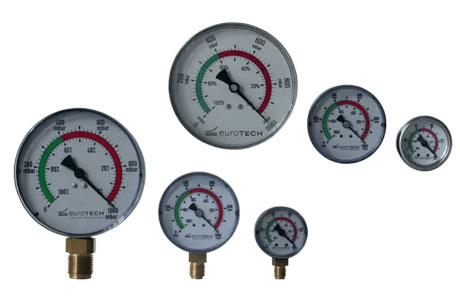What Is A Pressure Switch Used For?
Key Takeaway
A pressure switch is used to control systems by responding to pressure changes. It turns devices on or off, activates alarms, or regulates processes when pressure crosses preset limits.
Applications include maintaining safe operations in pumps, compressors, and HVAC systems, improving efficiency and safety.
Overview of Pressure Switch Applications
Pressure switches are versatile devices with a wide range of applications across various industries. Their primary function is to monitor and control pressure levels, making them essential components in systems like HVAC, water treatment, and manufacturing processes. By ensuring optimal pressure conditions, pressure switches contribute significantly to system safety and efficiency.
In addition to traditional applications, pressure switches are increasingly being used in renewable energy systems and smart technologies. Their adaptability and reliability make them suitable for both conventional and emerging applications, highlighting their importance in modern industrial and technological advancements. Understanding the diverse applications of pressure switches is key to leveraging their full potential in enhancing operational performance.

Role in Industrial Automation Systems
Pressure switches play a pivotal role in industrial automation systems by maintaining the required pressure levels for smooth operation. In automation, systems often rely on precise control of pressure to ensure proper functioning, and pressure switches provide this control by triggering actions when pressure deviates from predefined limits.
In conveyor systems, for instance, pressure switches are used to monitor and regulate air or fluid pressure, ensuring that the system operates at optimal performance. They also help control the pressure in pneumatic actuators and hydraulic cylinders, which are essential in automation processes. Without pressure switches, these systems would not be able to react to pressure changes on their own, requiring constant human oversight.
In robotic systems, pressure switches ensure that the robots have the right air or hydraulic pressure to function efficiently. In packaging and assembly lines, they help maintain the pressure required to control the machinery, preventing failures or shutdowns. The use of pressure switches in automation systems helps optimize production processes, reduce downtime, and enhance system reliability.
Use in Safety Mechanisms and Alarms
One of the most critical applications of pressure switches is in safety mechanisms and alarms. These devices help protect equipment, systems, and personnel by monitoring pressure levels and activating alarms or shut-off systems when dangerous pressure conditions occur.
In boiler systems, pressure switches are used to monitor the pressure within the vessel and trigger an alarm if the pressure becomes too high or too low, preventing potential safety hazards like explosions or system malfunctions. Similarly, in compressed air systems, pressure switches can activate an alarm or shutdown procedure if the pressure drops below a safe level, signaling potential issues with the air supply or leaks.
In safety-critical applications such as fire suppression systems and chemical processing plants, pressure switches act as an additional layer of protection. If the system pressure falls below a threshold, the pressure switch automatically activates a fail-safe mechanism, preventing potential failures and ensuring worker safety. These devices are essential for meeting safety standards and preventing hazardous conditions in various industries.
Applications in Fluid and Gas Control Systems
Pressure switches are indispensable in fluid and gas control systems, where they help regulate pressure to maintain safe and efficient operation. In hydraulic systems, pressure switches monitor and control the pressure of hydraulic fluid, ensuring that the system operates within safe limits. This prevents damage to pumps, valves, and cylinders due to overpressure, which can cause catastrophic failures.
In gas systems, pressure switches are used to control the pressure of gases such as natural gas or propane in pipelines, boilers, or combustion engines. By maintaining optimal gas pressure, these switches help optimize fuel consumption and prevent equipment damage. For instance, in natural gas distribution systems, pressure switches ensure that the pressure remains within the acceptable range to avoid leaks or blockages that could lead to dangerous situations.
Pressure switches are also crucial in water treatment facilities, where they help regulate the pressure in filtration and pumping systems. In these applications, they ensure that pressure levels are consistent, preventing damage to pipes and ensuring smooth operation of the water supply and treatment processes.
Benefits of Using Pressure Switches in Equipment
There are numerous benefits to using pressure switches in various types of equipment. First and foremost, pressure switches help protect equipment from damage caused by excessive or insufficient pressure. By automatically adjusting to changes in pressure, these devices help prevent overpressurization, which could damage pipelines, pumps, compressors, and other equipment. In hydraulic systems, they help ensure that pressure remains consistent, preventing issues like pump failure or system instability.
Another major benefit is energy efficiency. By maintaining optimal pressure levels, pressure switches ensure that equipment operates within its most efficient range. For example, in compressed air systems, pressure switches can prevent excessive energy consumption by shutting down the system when the required pressure is achieved, reducing unnecessary running time and energy use.
Pressure switches also help enhance system reliability. By automating the control of pressure, these devices reduce the need for manual intervention and make systems more self-regulating. This results in fewer manual errors and less downtime due to human oversight. Additionally, pressure switches help ensure that systems meet safety standards, making them an essential component for industries that must comply with strict regulatory requirements.
Conclusion
A pressure switch is a critical component in many systems, designed to monitor pressure levels and initiate actions when specific thresholds are reached. It operates by opening or closing an electrical contact when a set pressure is achieved, ensuring that systems function within safe parameters. This makes pressure switches invaluable in applications like HVAC systems, water pumps, and industrial machinery.
By automating responses to pressure changes, pressure switches help maintain operational efficiency and protect equipment from damage. They provide a reliable means of control, reducing the need for manual intervention and minimizing the risk of system failures.
